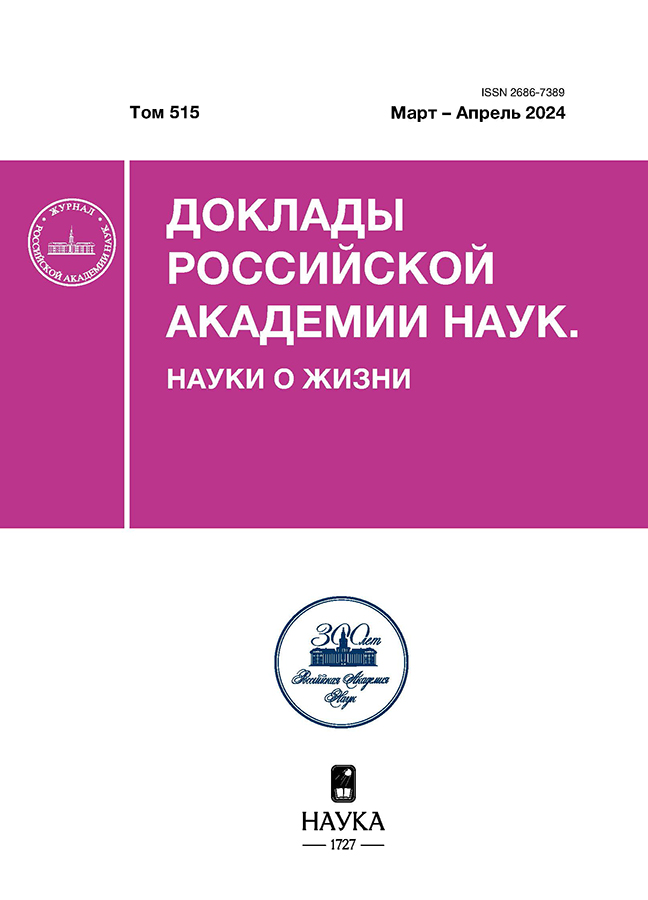Aberrant repair of 8-oxoguanine in short DNA bulges
- Autores: Eroshenko D.A.1,2, Diatlova E.A.1, Golyshev V.M.1, Endutkin A.V.1, Zharkov D.O.1,2
-
Afiliações:
- Institute of Chemical Biology and Fundamental Medicine SB RAS
- Novosibirsk State University
- Edição: Volume 515, Nº 1 (2024)
- Páginas: 14-18
- Seção: Articles
- URL: https://cardiosomatics.ru/2686-7389/article/view/651435
- DOI: https://doi.org/10.31857/S2686738924020031
- EDN: https://elibrary.ru/WGASGM
- ID: 651435
Citar
Texto integral
Resumo
The presence of DNA damage can increase the likelihood of DNA replication errors and promote mutations. In particular, pauses of DNA polymerase at the site of damage can lead to polymerase slippage and the formation of 1–2 nucleotide bulges. Repair of such structures using an undamaged DNA template leads to small deletions. One of the most abundant oxidative DNA lesions, 8-oxoguanine (oxoG), has been shown to induce small deletions but the mechanism of this phenomenon is currently unknown. We have studied the aberrant repair of oxoG, located in one- and two-nucleotide bulges, by the Escherichia coli and human base excision repair systems. Our results indicate that the repair in such substrates can serve as a mechanism for fixing small deletions in bacteria but not in humans.
Palavras-chave
Texto integral
Sobre autores
D. Eroshenko
Institute of Chemical Biology and Fundamental Medicine SB RAS; Novosibirsk State University
Email: dzharkov@niboch.nsc.ru
Rússia, Novosibirsk; Novosibirsk
E. Diatlova
Institute of Chemical Biology and Fundamental Medicine SB RAS
Email: dzharkov@niboch.nsc.ru
Rússia, Novosibirsk
V. Golyshev
Institute of Chemical Biology and Fundamental Medicine SB RAS
Email: dzharkov@niboch.nsc.ru
Rússia, Novosibirsk
A. Endutkin
Institute of Chemical Biology and Fundamental Medicine SB RAS
Email: dzharkov@niboch.nsc.ru
Rússia, Novosibirsk
D. Zharkov
Institute of Chemical Biology and Fundamental Medicine SB RAS; Novosibirsk State University
Autor responsável pela correspondência
Email: dzharkov@niboch.nsc.ru
Corresponding Member
Rússia, Novosibirsk; NovosibirskBibliografia
- Joshua-Tor L., Frolow F., Appella E., et al. // J. Mol. Biol. 1992. V. 225. № 2. P. 397–431.
- Jiao Y., Stringfellow S., Yu H. // J. Biomol. Struct. Dyn. 2002. V. 19. № 5. P. 929–934.
- Shi X., Beauchamp K.A., Harbury P.ЙB., Herschlag D. // Proc. Natl Acad. Sci. U.S.A. 2014. V. 111. № 15. P. E1473–E1480.
- Kunkel T.A., Bebenek K. // Annu. Rev. Biochem. 2000. V. 69. P. 497–529.
- Talhaoui I., Matkarimov B.T., Tchenio T., et al. // Free Radic. Biol. Med. 2017. V. 107. P. 266–277.
- Fleming A.M., Burrows C.J. // DNA Repair. 2017. V. 56. P. 75–83.
- Moriya M., Ou C., Bodepudi V., et al. // Mutat. Res. 1991. V. 254. № 3. P. 281–288.
- Markkanen E., Castrec B., Villani G., Hübscher U. // Proc. Natl Acad. Sci. U.S.A. 2012. V. 109. № 50. P. 20401–20406.
- Pande P., Haraguchi K., Jiang Y.-L., et al. // Biochemistry. 2015. V. 54. № 10. P. 1859–1862.
- Gilboa R., Zharkov D.O., Golan G., et al. // J. Biol. Chem. 2002. V. 277. № 22. P. 19811–19816.
- Kuznetsov N.A., Koval V. V., Zharkov D.O., et al. // Nucleic Acids Res. 2005. V. 33. № 12. P. 3919–3931.
- Sidorenko V.S., Nevinsky G.A., Zharkov D. O. // DNA Repair. 2007. V. 6. № 3. P. 317–328.
- Endutkin A.V., Yudkina A.V ., Zharkov T.D., et al. // Int. J. Mol. Sci. 2022. V. 23. № 21. 13353.
- Tchou J., Bodepudi V., Shibutani S., et al. // J. Biol. Chem. 1994. V. 269. № 21. P. 15318–15324.
- Zharkov D.O., Rosenquist T.A., Gerchman S.E., Grollman A. P. // J. Biol. Chem. 2000. V. 275. № 37. P. 28607–28617.
- Bruner S.D., Norman D.P.G., Verdine G.L. // Nature. 2000. V. 403. № 6772. P. 859–866.
- Fromme J.C., Verdine G.L. // J. Biol. Chem. 2003. V. 278. № 51. P. 51543–51548.
- Lavrukhin O.V., Lloyd R.S. // Biochemistry. 2000. V. 39. № 49. P. 15266–15271.
Arquivos suplementares












